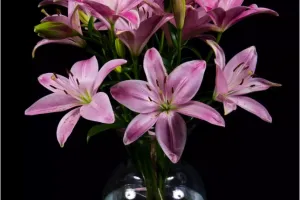Do you know what wind media is?
The wind as the medium for pollination is called wind medium. Wind-pollinated flowers are called wind-pollinated flowers or wind-pollinated plants. For example, Poaceae, Cyperaceae, Pinaceae, Ginkgo biloba, etc. Wind-pollinated flowers generally have underdeveloped perianth and are not beautiful. Pollen grains do not form agglomerates and do not have the characteristics of attachment, and are small and easily transported by the wind. It is extremely common for female flowers to be fertilized at a distance of hundreds of meters. Due to the large number of pollen grains and the characteristics of floating in the air, the pollen of Pinus and Compositae in America and other countries often invades people's nose and throat, thus becoming the cause of hay fever and hay fever. It is generally believed that wind pollination is more primitive than insect pollination.
1.Characteristics of wind media:
Wind-pollinated plants have many flowers. Often arranged in catkins or spikes. When the breeze blows, the shaking of the anthers disperses the pollen into the air. Their pollen grains are generally small and dry, with a smooth surface and extremely light weight, allowing them to spread over long distances. The amount of pollen produced by wind-pollinated plants is extremely large. For example, one corn plant can produce about 5 million grains of pollen. One inflorescence of a pine tree can produce about 160,000 grains of pollen. To ensure the realization of pollination. Angiosperms anemophilous stigma large. Branches, rough and hairy, often exposed, suitable for wind pollination. For example, the style of the female flower of maize is very long, which is easy to receive pollen. Some plants have very long filaments that hold the anthers high so that the pollen is easily carried away by the wind. Some stigmas also secrete mucus, which is easy to stick to the flying pollen.
2.Pollination and distribution:
Wind pollination is the most common among plants in plant communities composed of a few species. Therefore, in the temperate zone of the northern hemisphere, wind-borne pollination is more pronounced than in the very rich tropics. The flora of the small plains islands also has a larger percentage of aeolian species; for example, on the North Frieze Islands, more than 36% of the species are wind-pollinated. In contrast, in the mountains, animal-borne species predominate in percentage; for example, in the high mountains of the Alps, wind-borne species account for about 16%, while in the Caucasus (Soviet Union) at 2,000 m above sea level, Only 11%. The percentage of anemophilous plants did not gradually increase until near the snow school and in the constant snow belt. In the insect-less Arctic regions, the percentage of wind-borne species increased: 38% in Iceland, 34.7% in Greenland, 32.4% in Novaya Zemlya, and 37% in Spitsbergen .
There are many types of wind-pollinated flowers, such as poplar, willow, walnut, chestnut, sorghum, corn, wheat, rice, oak, birch, dandelion, etc. Generally, monocotyledonous plants belong to wind-pollinated flowers. Wind-pollinated flowers refer to flowers that are pollinated by wind. They are characterized by small flowers, indistinct, large number of flowers, dense flowers, spike-shaped flowers, and can produce a large amount of pollen. The pollen is lighter and drier. Wind-pollinated flowers are generally the first. Flowers after growing leaves.


